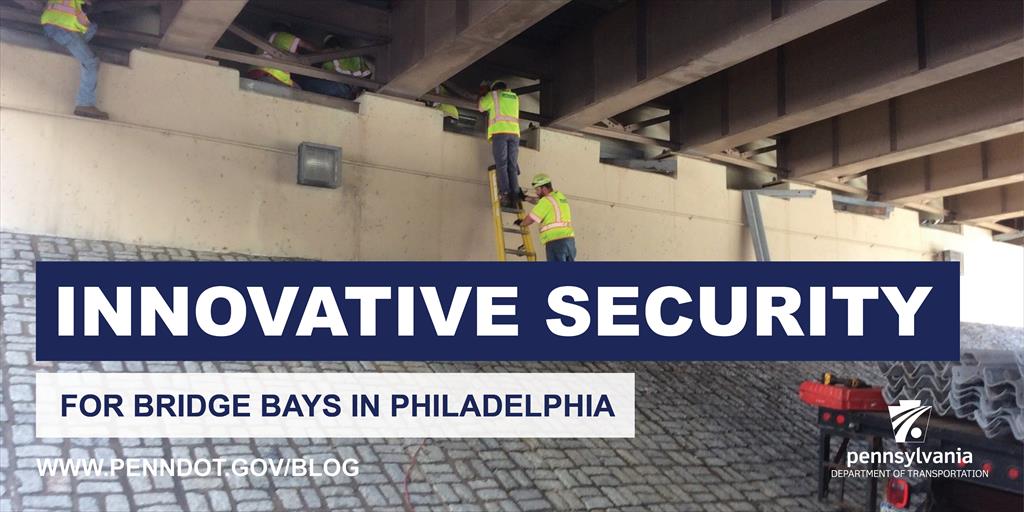
One of the many challenges facing urban maintenance organizations is the time and resources dedicated to clearing out spaces under bridges where people occupy illegally. Despite performing routine clean-up efforts that involve clearing biohazardous trash and sanitizing bridge bays, and installing expensive security measures like custom fencing and rock lining bay floors, the spaces are often reoccupied immediately. This complex issue creates safety hazards for work crews and certain quality-of-life concerns for the community and the motorists, cyclists, and pedestrians that use these roadways.

In an effort to secure the areas in a more permanent manner, District 6 developed an innovative, low-cost security measure that can be fabricated in one day using recycled guide rail. In September 2015, guide rail components were installed to block all 30 bays underneath Interstate 676 at Fourth Street in a popular residential area in Philadelphia. Two years later, the method has been proven to be effective and efficient with only one bay needing adjustment due to improper panel placement.
Since its installation, District 6 has received high praise from residents and state and city officials. Look for similar measures to be installed underneath other bridges in the region where this type of security is needed.
PennDOT would like to thank city officials, the Philadelphia Police, Fire, Water and Streets departments, and Social Services for their efforts and implementation of this new and successful security measure.

ABOUT THIS BLOG
Did you know PennDOT is directly responsible for nearly 40,000 miles of highway and roughly 25,000 bridges? We oversee programs and policies affecting highways, urban and rural public transportation, airports, railroads, ports and waterways, in addition to administering the state's more than 11 million vehicle registrations and 8.8 million driver's licenses.
So, how do we do what we do? And how can we help you travel in Pennsylvania — whether it be for business or leisure — in safe and enjoyable manner? Read PennDOT Way to learn more about the department, what we do, and how and why we do it.
TAGS
50-Year Anniversary, 511PA, Aggressive Driving, Airports, Autonomous Vehicles, Bicycles, Bridges, Child Safety, Community Relations, Construction, COVID-19, Distracted Driving, District 1, District 10, District 11, District 12, District 2, District 3, District 4, District 5, District 6, District 8, District 9, DOTcom, Driver and Vehicle Services, Emergency Responders, Employment, Equity, FAQ Friday, Human Trafficking, Impaired Driving, Innovations, Live Free Ride Alive, Maintenance Monday, Motorcycles, Older Drivers, PA Motorcycle Safety Program, Pedestrians, PennDOT Connects, Ports, Public Transit, Railroads, REAL ID, Road MaP, Roadside Beautification, Rural Roads, Safety, School Buses, Seat Belts, State Transportation Innovation Council (STIC), Sustainability, Teen Drivers, Throwback Thursday, Transportation Funding, Travel in PA, Welcome Centers, Winter, Work Smart, Work Zone, Yellow Dot
LATEST POSTS
PennDOT Continues Sharing, Updating Resources for Local Governments to Pursue Bipartisan Infrastructure Law Funding Opportunities
Norwin High School Wins 2024 ‘Innovations Challenge’
Demo Complete: I-95 CAP Project in Center City Philadelphia
PennDOT Archeologist Connects Past, Present, and Future
Lehigh Valley DUI, Highway Safety Task Force Hosts Law Enforcement Seminar
ARCHIVES
2024
2023
2022
2021
2020
2019
2018
2017

